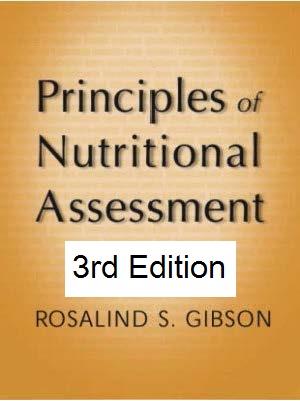
Kirkpatrick S
Reproducibility in
Dietary Assessment
3rd Edition August, 2025
Abstract
A dietary assessment method is considered reproducible if it gives very similar results when used repeatedly in the same situation. The reproducibility, or precision, of any dietary method is a function of the measurement errors (discussed in Chapter 5), uncertainty resulting from true variation in daily nutrient intakes (Section 3.1.2), and variability introduced by a variety of other confounding factors (e.g., age and sex, day of the week, season, chronic illness, body weight status). If measurement errors and confounding factors are minimized, uncertainty in the estimation of usual nutrient intakes remains. Consequently, although the results from two separate occasions may disagree, the method may not have poor reproducibility; rather, food intakes may have changed. Therefore, only an estimate of reproducibility can be made. For a group of individuals, true variability arises because dietary intakes differ among individuals (between- or inter-person variation) and within one individual over time (within- or intra-person variation). For instance, variation associated with factors such as day of week and season may be shaped by cultural and environmental factors. Unlike measurement errors, no attempt should be made to try to minimize between- and within-person variation because they characterize the true usual intake of a group of individuals. Instead, the dietary assessment protocol should allow these two sources of variability to be separated and estimated statistically. In this way, the magnitude of the effect of within-person versus between-person variation can be considered during the interpretation of the dietary data. This is important because this variation biases estimates of the prevalence of inadequate or excessive intakes in a population (Section 3.3.2) and can distort correlations and other measures of association, thus obscuring diet-disease relationships (Section 5.3). Though related to repeatability under the umbrella of reliability, reproducibility is distinct from repeatability because of non-negligible changes in dietary intake over time. Repeatability of dietary assessment methods cannot be determined because replicate observations in dietary assessment are impossible. Reproducibility is also different from dependability, which assesses the extent to which measured differences reflect actual differences in intake. Reproducibility should be considered along with other properties, including validity (Chapter 7), to assess whether a method is suited to the research objective and context. For example, a method may have high reproducibility but lack validity for assessing the dietary components of interest in the target population. This chapter describes the assessment of reproducibility in the most used dietary assessment methods. Some notes on the statistical techniques used to assess reproducibility are also included, though researchers are encouraged to consult with statisticians to guide the optimal application and interpretation of such techniques. CITE AS: Kirkpatrick S, Reproducibility in Dietary Assessment https://nutritionalassessment.org/reproducibility/Email: skirkpat@uwaterloo.ca
Licensed under CC-BY-4.0
( PDF )




